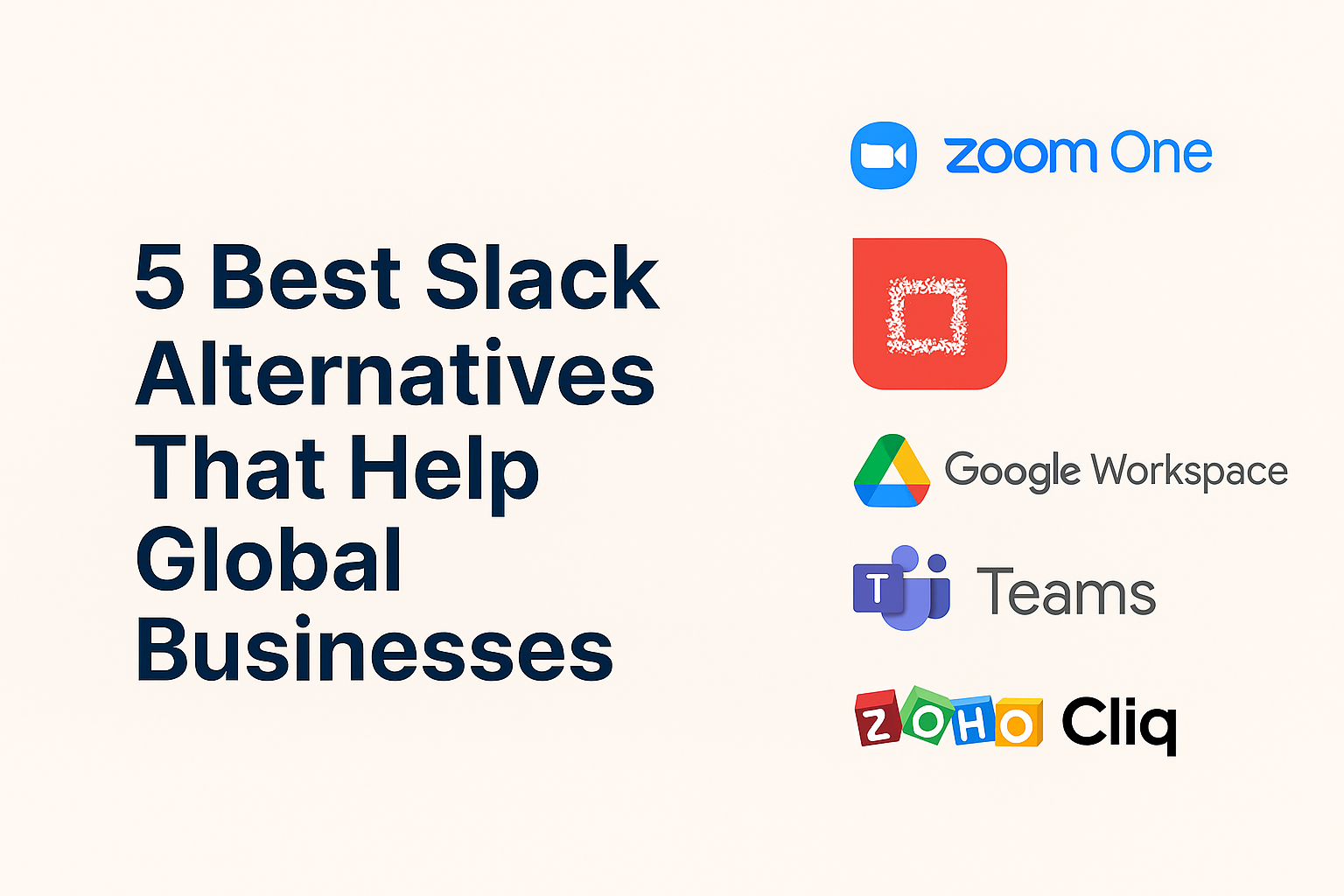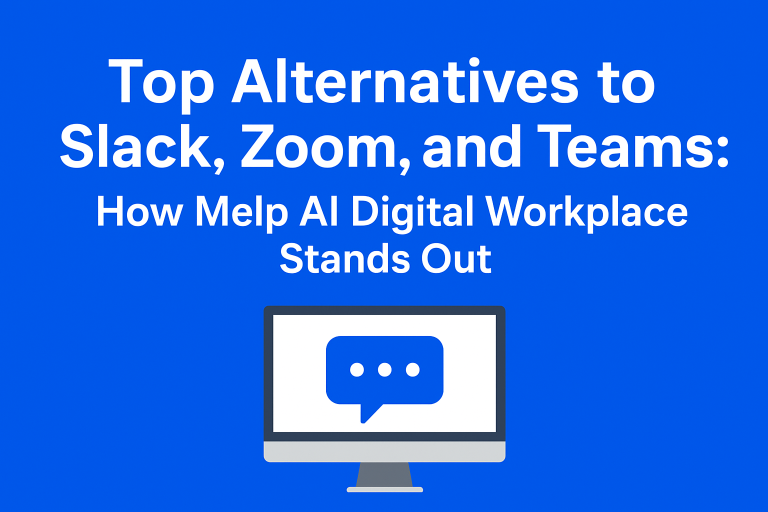Zoom vs. Melp: Which Platform Fits Your Workplace Best?

In the hybrid-work era, teams don’t just need meetings — they need an organized place to talk, decide, and get work done. That’s where the difference between Zoom and Melp becomes important. Zoom is the familiar, battle-tested platform most people reach for when a meeting is needed. Melp, on the other hand, is built as an all-in-one digital workplace: chat, calls, AI help, scheduling, search, and file management in one place. Below I expand on how each platform behaves in real work, what tradeoffs to expect, and which teams are likely to benefit most.
How they approach collaboration (the philosophy)
Zoom treats video as the center of gravity. It makes joining and running a call smooth at scale — from quick team standups to large webinars. Because it focuses on meetings, many organizations pair Zoom with dedicated chat, project, and file tools. That’s a perfectly valid setup if your workflows are already segmented: one tool for meetings, another for chat, another for tasks.
Melp flips that model: meetings are a feature inside a broader workspace. Chats, files, voice notes, live translation, and AI drafting live alongside calls. Instead of hopping between five apps, you can stay inside a single environment where conversations are searchable, meetings can be launched from a topic, and AI can help summarize what happened. That unified approach reduces friction — but it also asks teams to trust one vendor for many functions.
Real-world experience: day-to-day workflows
If you’re running a content review or a design critique, Zoom wins on reliability. Screen sharing, multiple presenters, annotation, and webinar tools are mature and predictable. Hosts have grown used to Zoom’s meeting controls, recording options, and the way breakout rooms let you split groups quickly during live sessions.
If your day looks more like continuous collaboration — a mix of threaded discussions, intermittent calls, and lots of knowledge retrieval — Melp can speed things up. With topic-based chat and advanced search, you can find the exact conversation, file, or link without scrolling endlessly. Need to convert a messy draft into a polished message? Melp’s “Draft For Me” AI can save time. Need to include far-flung teammates in their native language? Melp’s real-time translation (across multiple languages) reduces delay and confusion.
Communication patterns: synchronous vs. asynchronous
Zoom optimizes synchronous interaction: high-quality audio/video and features that support live facilitation. Melp is built for both. It supports synchronous calls but gives equal emphasis to asynchronous work — voice notes you can listen to on your own time, chat history you can email to a colleague, and AI summaries you can read instead of replaying a meeting. For teams that operate across time zones, that mixed model is powerful: fewer meetings, more clarity.
AI and accessibility: who helps you remember?
Both platforms have invested in AI, but they use it differently. Zoom’s AI features are improving meeting productivity with transcripts and meeting highlights. Melp’s AI extends into the workspace: drafting messages, summarizing recorded calls and sending those summaries to moderators, and powering searchable transcripts tied to chat topics. That makes knowledge capture less manual.
Accessibility also matters. Melp’s live captions and translations make conversations inclusive for multilingual teams. Zoom offers captioning and transcription too — it’s robust — but Melp’s translation-in-chat model changes how non-native speakers participate across the whole platform, not just during calls.
Integrations and ecosystem
Integrations and Ecosystem
Zoom’s strength lies in its wide integration ecosystem. It connects easily with Google Workspace, Microsoft 365, Slack, and dozens of productivity apps, making it a safe choice for companies that already have a well-established digital stack.
Melp takes a slightly different approach. Because it already bundles chat, scheduling, calls, and storage, you don’t need too many add-ons. But for teams that rely on external project management or CRM platforms, Melp integrates with Asana and Salesforce, keeping workflows smooth without forcing users to leave the workspace.
Security and admin control
Large enterprises pick tools that offer predictable admin controls and compliance features. Zoom’s admin dashboard, user provisioning, and meeting security controls (waiting rooms, passcodes, encryption options) are mature. Melp also offers controls like moderated breakout rooms, recording governance, and role-based features that are geared toward keeping conversations private and organized. When evaluating either platform, check how each handles data retention, exportability of chat history, and single-sign-on (SSO) requirements for your organization.
When to pick Zoom
Choose Zoom if:
- Your primary need is reliable, high-quality video at scale (town halls, webinars, frequent synchronous meetings).
- You already have a separate stack for chat, files, and tasks and prefer best-of-breed tools for each function.
- You need a predictable, mature meeting experience with broad third-party integrations.
When to pick Melp
Choose Melp if:
- You want to reduce tool sprawl and centralize chat, calls, scheduling, and lightweight document workflows in one place.
- Your team benefits from built-in AI (drafting, summarization) and real-time translation.
- You prioritize searchable conversations, the ability to email entire chat histories, and a workspace that treats calls as part of an ongoing topic rather than an isolated event.
Final thoughts: fit over feature
Neither platform is strictly “better” — they solve slightly different problems. Zoom is an exceptional meeting tool and continues to be the standard for live events. Melp aims to be a workplace hub that blends meetings into daily work and extends value with AI and deep search. The right choice comes down to how your team prefers to work: do you want a specialist meeting tool to plug into an existing stack, or do you want a unified workspace that reduces context switching and makes conversations your single source of truth?




